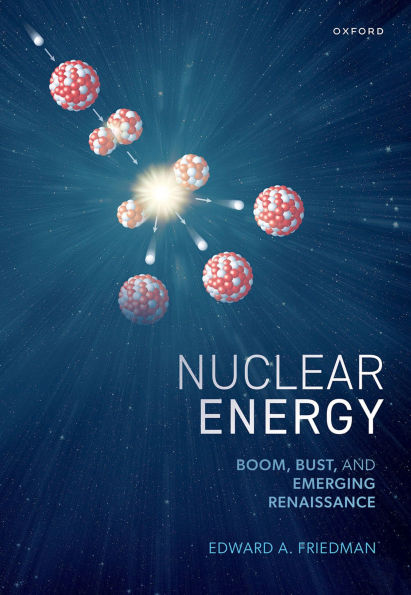Questions of energy policy are among the most central and consequential of any confronting society today. While the role of nuclear energy is key, there is little understanding and much misinformation regarding its nature and its potential. Impeding the emergence of informed discourse on this topic is the lack of clear, objective information. Nuclear Energy: Boom, Bust and Emerging Renaissance helps answer the question of "What role can nuclear energy play in meeting the global warming challenge?" Currently, the general public has little access to developments that have been made in nuclear energy technology since the accidents of Chernobyl and Fukushima. These new designs promise to come to fruition around 2030, as the 28th United Nations Conference on Climate Change (COP28) witnessed a call for a tripling of the use of nuclear power by 2050. Edward A. Friedman places the troubling issues of nuclear power into both historical and forward-looking contexts, first by exploring the consequences since the first reactor was connected to a public electrical grid, and then by envisioning radically new designs that promise a safe path toward achieving net zero carbon emissions. With non-technical explanations, this book provides insight of how nuclear reactor technology holds the promise of making significant contributions to the struggle against global warming, and why dozens of nations are engaged in innovation and expansion of nuclear technology. Timely and insightful, Nuclear Energy will appeal to the lay reader while also serving as a college level text for both non-science students studying energy policy or sustainability and students of science and technology.
1147259021
Nuclear Energy: Boom, Bust, and Emerging Renaissance
Questions of energy policy are among the most central and consequential of any confronting society today. While the role of nuclear energy is key, there is little understanding and much misinformation regarding its nature and its potential. Impeding the emergence of informed discourse on this topic is the lack of clear, objective information. Nuclear Energy: Boom, Bust and Emerging Renaissance helps answer the question of "What role can nuclear energy play in meeting the global warming challenge?" Currently, the general public has little access to developments that have been made in nuclear energy technology since the accidents of Chernobyl and Fukushima. These new designs promise to come to fruition around 2030, as the 28th United Nations Conference on Climate Change (COP28) witnessed a call for a tripling of the use of nuclear power by 2050. Edward A. Friedman places the troubling issues of nuclear power into both historical and forward-looking contexts, first by exploring the consequences since the first reactor was connected to a public electrical grid, and then by envisioning radically new designs that promise a safe path toward achieving net zero carbon emissions. With non-technical explanations, this book provides insight of how nuclear reactor technology holds the promise of making significant contributions to the struggle against global warming, and why dozens of nations are engaged in innovation and expansion of nuclear technology. Timely and insightful, Nuclear Energy will appeal to the lay reader while also serving as a college level text for both non-science students studying energy policy or sustainability and students of science and technology.
29.99
In Stock
5
1

Nuclear Energy: Boom, Bust, and Emerging Renaissance
232
Nuclear Energy: Boom, Bust, and Emerging Renaissance
232Related collections and offers
29.99
In Stock

Product Details
| ISBN-13: | 9780198961161 |
|---|---|
| Publisher: | OUP Oxford |
| Publication date: | 07/21/2025 |
| Sold by: | Barnes & Noble |
| Format: | eBook |
| Pages: | 232 |
| File size: | 6 MB |
About the Author
From the B&N Reads Blog
